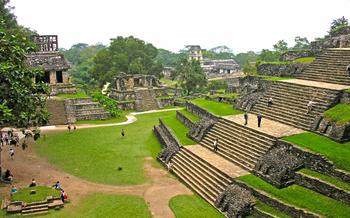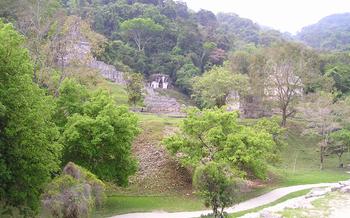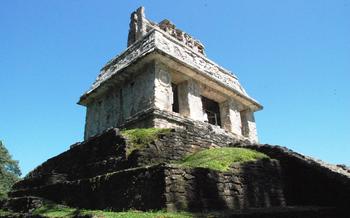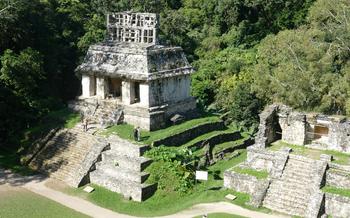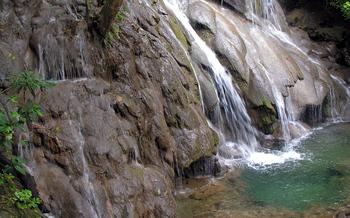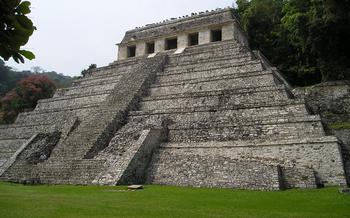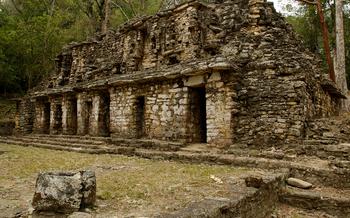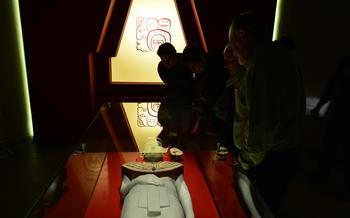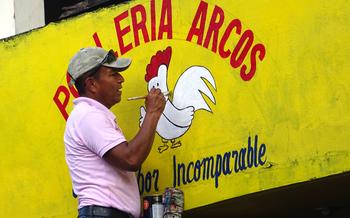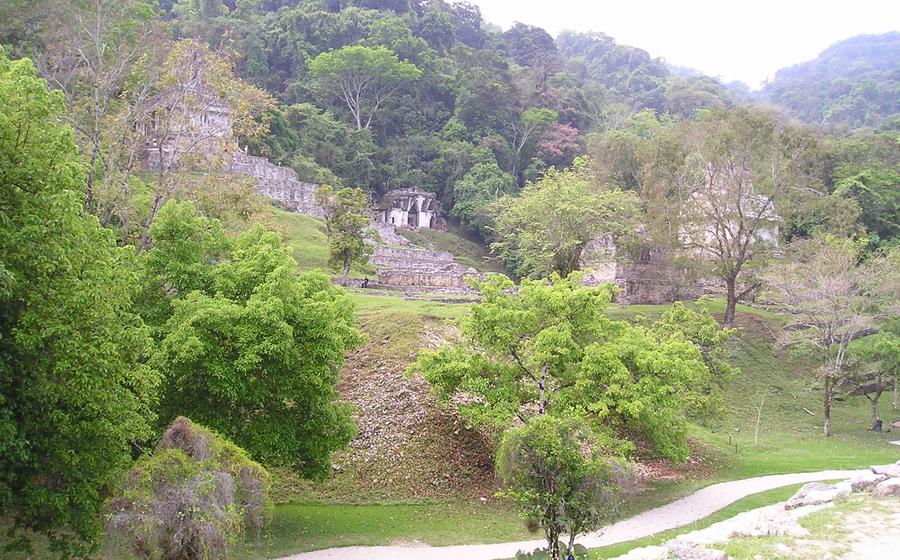
Ecomuseo del Cacao
- Palenque: A Cultural Gem in Chiapas
- Ecomuseo del Cacao: A Journey into Chocolate's Origins
- Immersive Experience at the Ecomuseo
- The History of Cacao in Mexico
- Cacao Biodiversity and Conservation
- Chocolate-Making Process Unveiled:
- Workshop: Creating Your Own Chocolate
- Mayan Cacao Rituals and Ceremonies: A Connection to the Divine
- Chocolate Tasting: A Journey of Flavors
- Supporting Local Communities
- Cultural and Natural Attractions in Palenque
- Planning Your Visit to the Ecomuseo
- Transportation Options to Palenque:
- Local Cuisine and Dining in Palenque
- Insider Tip: Cacao-Themed Souvenirs
Palenque: A Cultural Gem in Chiapas
Palenque, a city nestled in the lush rainforests of Chiapas, Mexico, is a cultural and historical treasure trove. Once a thriving Maya city-state, Palenque boasts impressive archaeological ruins that showcase the ingenuity and artistry of the ancient Maya civilization. Visitors can marvel at the intricate carvings and well-preserved temples, including the iconic Temple of Inscriptions, which houses the tomb of the legendary ruler Pakal the Great.
Beyond its archaeological significance, Palenque is also a gateway to the region's natural beauty. The city is surrounded by lush rainforests, cascading waterfalls, and verdant landscapes, offering ample opportunities for adventure and exploration. Hiking trails wind through the jungle, leading to hidden cenotes and breathtaking viewpoints. Birdwatching enthusiasts can spot a diverse array of colorful species, while nature lovers can immerse themselves in the region's rich biodiversity.
Ecomuseo del Cacao: A Journey into Chocolate's Origins
The Ecomuseo del Cacao, located in the heart of Palenque, offers a unique and immersive journey into the world of chocolate. This museum is not just about showcasing the history and culture of cacao, but also about promoting sustainable practices and community involvement. Through interactive and educational exhibits, visitors are taken on a journey that spans from the ancient origins of cacao to its modern-day significance.
The museum highlights the biodiversity of cacao, showcasing the different varieties grown in Mexico and their unique flavors. It also emphasizes the importance of preserving genetic diversity and protecting cacao ecosystems through sustainable farming practices. Visitors can learn about the traditional Mayan rituals and ceremonies associated with cacao, as well as the role of cacao in the local economy and culture.
The Ecomuseo del Cacao is more than just a museum; it is a celebration of chocolate and its profound impact on the region. By immersing visitors in the world of cacao, the museum not only educates and entertains but also inspires a deeper appreciation for this beloved delicacy and its cultural significance.
Immersive Experience at the Ecomuseo
The Ecomuseo del Cacao offers an immersive experience that takes visitors on a journey through the world of chocolate, from its origins to its transformation into the delicious treat we know and love. Immerse yourself in the lush cacao plantation, where you can learn about the different varieties of cacao trees and the sustainable farming practices used to cultivate them.
Get your hands dirty in the interactive chocolate-making workshop, where you'll learn the traditional techniques of roasting, grinding, and tempering chocolate. Create your own personalized chocolate bar, experimenting with different flavors and ingredients to create a unique and delicious confection.
Participate in traditional Mayan rituals and ceremonies that celebrate the sacred significance of cacao in Mayan culture. Witness the ceremonial preparation of cacao drinks and learn about the deep connection between the Maya and this precious commodity.
Indulge in a tasting of various types of chocolate, from traditional Mayan hot chocolate to gourmet truffles. Experience the diverse flavors and aromas of different cacao varieties and discover the nuances that make each one unique.
The History of Cacao in Mexico
Cacao, the primary ingredient in chocolate, has a rich and ancient history in Mexico, dating back to the Mesoamerican civilizations. The Maya civilization, which flourished in the region from around 2000 BC to 1500 AD, played a pivotal role in the cultivation and consumption of cacao. The Mayans considered cacao to be a sacred gift from the gods, and they used it in religious ceremonies, as a form of currency, and as a culinary treat. Cacao beans were also used as a form of currency, and they were often exchanged for other goods and services.
The Spanish conquistadors, who arrived in Mexico in the 16th century, were introduced to cacao by the Maya and Aztec civilizations. They quickly recognized its economic potential and brought cacao back to Europe, where it quickly became a popular luxury item among the wealthy. This led to the establishment of large-scale cacao plantations in Mexico, and the country became a major exporter of cacao to Europe.
The introduction of cacao to Europe had a profound impact on the global chocolate industry. Chocolate production and consumption spread throughout Europe, and new methods of processing and flavoring were developed. The popularity of chocolate continued to grow in the centuries that followed, and it eventually became a staple food in many cultures around the world. Today, Mexico remains one of the leading producers of cacao, and the country's cacao-growing regions are home to a diverse array of cacao varieties.
Cacao Biodiversity and Conservation
Mexico is a treasure trove of cacao biodiversity, boasting a diverse array of cacao varieties that contribute to the country's rich cultural and agricultural heritage. The Ecomuseo del Cacao plays a pivotal role in preserving this genetic diversity. Through its conservation efforts, the museum safeguards the future of cacao and ensures that future generations can continue to enjoy the unique flavors and aromas of this ancient crop.
The Ecomuseo collaborates with local farmers to promote sustainable farming practices that protect the environment and preserve the delicate balance of cacao ecosystems. Agroforestry techniques, such as planting shade trees alongside cacao trees, help to create a diverse and resilient ecosystem that benefits both the cacao plants and the surrounding wildlife. By employing these sustainable methods, the museum contributes to the long-term viability of cacao cultivation in the region.
Furthermore, the Ecomuseo raises awareness about the importance of conserving cacao biodiversity. Through educational programs and workshops, the museum teaches visitors about the different cacao varieties, their unique characteristics, and the threats they face. This knowledge empowers individuals to make informed choices when purchasing chocolate and to support sustainable practices that protect the environment and preserve the cultural heritage of cacao.
Chocolate-Making Process Unveiled:
Step into the world of chocolate creation at the Ecomuseo del Cacao. Discover the intricate journey from harvesting cacao pods to transforming them into delectable chocolate treats. Learn about the crucial stages of fermentation, roasting, grinding, and tempering, which bring out the rich flavors and aromas of chocolate. Witness traditional and modern techniques used to craft chocolate, from ancient Mayan methods to contemporary machinery. Explore the different types of chocolate, from dark and bitter to creamy and sweet, each with its unique flavor profile. Engage in interactive demonstrations and tastings, where you can savor the diverse flavors of chocolate and learn to appreciate its complexity.
Workshop: Creating Your Own Chocolate
The Ecomuseo del Cacao offers a unique opportunity to learn the art of chocolate-making firsthand. Participate in a hands-on workshop and create your own chocolate bar from scratch. Under the guidance of expert chocolatiers, you will embark on a journey from raw cacao beans to a finished product.
Begin by roasting the cacao beans to enhance their flavor. Once roasted, the beans are cracked and winnowed to separate the nibs from the shells. The nibs are then ground into a smooth paste using traditional stone grinders or modern machinery.
The next step is to temper the chocolate, a crucial process that determines the texture and shine of the final product. This involves carefully heating and cooling the chocolate to achieve the desired consistency.
With your tempered chocolate ready, it's time to add your personal touch. Experiment with different flavors and ingredients to create a unique chocolate bar that reflects your preferences. You can add nuts, fruits, spices, or even chili peppers for a spicy kick.
Once your chocolate is customized, pour it into molds and let it cool. After a few hours, your handcrafted chocolate bars are ready to be packaged and presented. Take pride in your creations and savor the taste of your own labor of love.
Mayan Cacao Rituals and Ceremonies: A Connection to the Divine
In Mayan culture, cacao was not merely a food or beverage but a sacred and revered substance. The Mayans held elaborate rituals and ceremonies centered around cacao cultivation and consumption. These rituals were believed to honor the cacao gods, ensure a bountiful harvest, and bring good fortune.
One of the most important rituals was the cacao planting ceremony. Before planting new cacao trees, Mayan farmers would perform a ritual to ask permission from the gods and ensure the trees' well-being. The ritual involved offerings of cacao beans, maize, and incense, along with prayers and chants.
Another significant ceremony was the cacao harvest festival. When the cacao pods were ripe, the Mayans would gather for a grand celebration to honor the cacao gods and express gratitude for the harvest. The festival included music, dancing, feasting, and offerings of cacao beans and other gifts.
Cacao was also used in religious ceremonies and rituals. Mayan priests and shamans would consume cacao during rituals to enhance their connection with the spirit world and receive divine guidance. Cacao was believed to have a spiritual and intoxicating effect, allowing individuals to communicate with the gods and ancestors.
Today, some indigenous communities in Chiapas continue to practice traditional cacao rituals and ceremonies. While the rituals have evolved over time, they still reflect the deep reverence and respect that the Mayans held for cacao.
Chocolate Tasting: A Journey of Flavors
Indulge in a tasting experience that will transport your palate to chocolate heaven. At the Ecomuseo, you'll have the opportunity to sample a wide variety of chocolates, from traditional Mayan recipes to modern gourmet creations. Each chocolate is carefully curated to showcase the unique flavors and characteristics of different cacao varieties.
As you savor each morsel, expert guides will explain the flavor profiles, textures, and aromas that define each chocolate. Learn to distinguish between notes of fruit, nuts, spices, and florals, and appreciate the complexity and diversity of cacao's flavors.
Compare and contrast different cacao varieties, discovering the subtle nuances that make each one special. From the smoky richness of criollo beans to the fruity acidity of trinitario hybrids, each chocolate tells a story of its origin and terroir.
To enhance your tasting experience, pair your chocolates with complementary flavors, such as coffee, fruits, nuts, and cheeses. Experiment with different combinations to find your perfect match and create a harmonious symphony of flavors.
Whether you're a chocolate connoisseur or a curious beginner, the Ecomuseo's chocolate tasting is a journey of discovery and delight. Prepare your taste buds for an unforgettable adventure as you delve into the rich and diverse world of chocolate.
Supporting Local Communities
The Ecomuseo del Cacao is deeply committed to sustainable tourism practices that benefit the local community. By visiting the museum, you not only gain valuable insights into the world of chocolate but also contribute to the economic and cultural well-being of the region. The museum collaborates closely with local farmers and artisans, ensuring that they receive fair compensation for their products and services. This support helps preserve traditional cacao-growing practices and encourages the continuation of cultural traditions.
Moreover, the Ecomuseo promotes cultural exchange and understanding between visitors and the local community. Through interactive exhibits, workshops, and ceremonies, visitors have the opportunity to learn about Mayan culture and traditions firsthand. This exchange fosters mutual respect and appreciation, creating a positive and lasting impact on both visitors and the local population.
By supporting the Ecomuseo del Cacao, you become part of a responsible tourism movement that values sustainability, cultural preservation, and community empowerment. Your visit contributes to the preservation of the unique cacao heritage of Palenque while supporting the livelihoods of local people.
Cultural and Natural Attractions in Palenque
Beyond the captivating Ecomuseo del Cacao, Palenque offers a wealth of cultural and natural attractions that will enchant every traveler. History buffs can delve deeper into the Maya civilization at nearby archaeological sites like Bonampak, renowned for its exquisitely preserved murals, or Yaxchilán, situated amidst the lush rainforest.
Nature enthusiasts will find solace in the stunning waterfalls and natural reserves surrounding Palenque, providing ample opportunities for hiking, birdwatching, and wildlife spotting. The region's diverse flora and fauna, including howler monkeys, toucans, and colorful butterflies, will captivate your senses. Take advantage of local markets and shops to acquire unique souvenirs and handicrafts, supporting the local economy while immersing yourself in the vibrant culture of Palenque.
Planning Your Visit to the Ecomuseo
To fully immerse yourself in the world of cacao at the Ecomuseo del Cacao, advanced reservations are highly recommended, especially for workshops and guided tours. This will ensure your spot and allow the museum to prepare accordingly.
The Ecomuseo typically operates from Tuesday to Sunday, with varying hours depending on the season. It's advisable to check their website or contact them directly for the most up-to-date information on operating hours and ticket prices.
When packing for your visit, consider wearing comfortable clothing and sturdy shoes suitable for walking through the cacao plantation. Sunscreen and insect repellent are also recommended for outdoor activities.
The Ecomuseo is committed to accessibility and inclusivity. Visitors with disabilities can request assistance from the staff, and ramps and accessible restrooms are available.
Remember to bring your camera to capture the beautiful scenery, cacao trees, and your chocolate-making creations. You may also want to bring a notebook to jot down any interesting information or recipes you learn during your visit.
Transportation Options to Palenque:
Reaching Palenque is a breeze, with multiple transportation options available. For a scenic journey, hop on a domestic flight from Mexico City or Cancun and touch down at the Palenque National Airport, a mere 10-minute drive from the city center. Alternatively, if you prefer a land adventure, opt for a comfortable bus ride from nearby cities like San Cristóbal de las Casas, Tuxtla Gutiérrez, or Villahermosa. The bus terminal is conveniently located just a short walk from the city center, making it easy to get your bearings. For those who crave the freedom of the open road, renting a car is an excellent choice. The drive from major cities like Mérida or Oaxaca offers breathtaking scenery and the chance to explore hidden gems along the way. Just remember to factor in the driving time, which can range from 6 to 10 hours depending on your starting point. Once in Palenque, getting around is a breeze. The city is compact and walkable, with most attractions within easy reach. For longer distances, local taxis are readily available and affordable. Embrace the local vibes by hopping on a traditional "colectivo," shared vans that ply the city streets and offer a budget-friendly way to travel.
Local Cuisine and Dining in Palenque
Palenque's culinary scene offers a delectable tapestry of flavors, showcasing the region's rich cultural heritage and fresh, local ingredients. Begin your culinary journey by savoring the traditional dish of pejelagarto asado, a grilled fish unique to the Usumacinta River, often accompanied by flavorful sauces and garnishes.
For a taste of Mayan cuisine, try tamales chiapanecos, corn dough parcels stuffed with savory fillings like chicken, pork, or vegetables, wrapped in banana leaves and steamed to perfection. Don't miss the iconic pozol, a refreshing fermented corn beverage, a staple in Chiapas, often enjoyed with a squeeze of lime and a sprinkle of chili powder.
Palenque's street food scene is equally enticing, offering a budget-friendly way to sample local delights. Indulge in antojitos, a diverse array of snacks and small plates, such as crispy tlayudas (large tortillas topped with beans, cheese, and various fillings) or memelas (thick corn tortillas with savory toppings).
For a memorable dining experience, head to La Cañada del Jaguar, a renowned restaurant nestled in a lush garden setting, serving innovative dishes inspired by traditional Mayan cuisine, using locally sourced ingredients.
Navigating local markets is a rewarding experience, offering fresh produce, spices, and handmade goods. The Mercado Público de Palenque is a bustling hub of activity, where you can find everything from exotic fruits to artisanal cheeses.
Whether you prefer fine dining or street food, Palenque's culinary delights will tantalize your taste buds and leave you craving more.
Insider Tip: Cacao-Themed Souvenirs
As a memento of your visit to the Ecomuseo del Cacao and Palenque, consider purchasing cacao-themed souvenirs to take back home. These unique items not only serve as reminders of your experience but also support local artisans and their craft.
The Ecomuseo's gift shop offers a wide range of cacao-related products, including handmade chocolates, cacao-based cosmetics, and souvenirs such as pottery, textiles, and jewelry adorned with cacao motifs.
For a truly authentic souvenir, visit the local markets in Palenque, where you'll find an array of handmade crafts and traditional cacao products sold by local artisans. Bargaining is expected and part of the cultural experience.
Look for unique items such as hand-carved wooden sculptures depicting cacao pods or Mayan deities associated with cacao, woven bags and baskets made from natural fibers, and colorful textiles featuring traditional Mayan designs inspired by cacao.
By purchasing cacao-themed souvenirs, you not only take home a piece of Palenque's rich cacao culture but also contribute to the sustainability of local communities and the preservation of traditional crafts.
